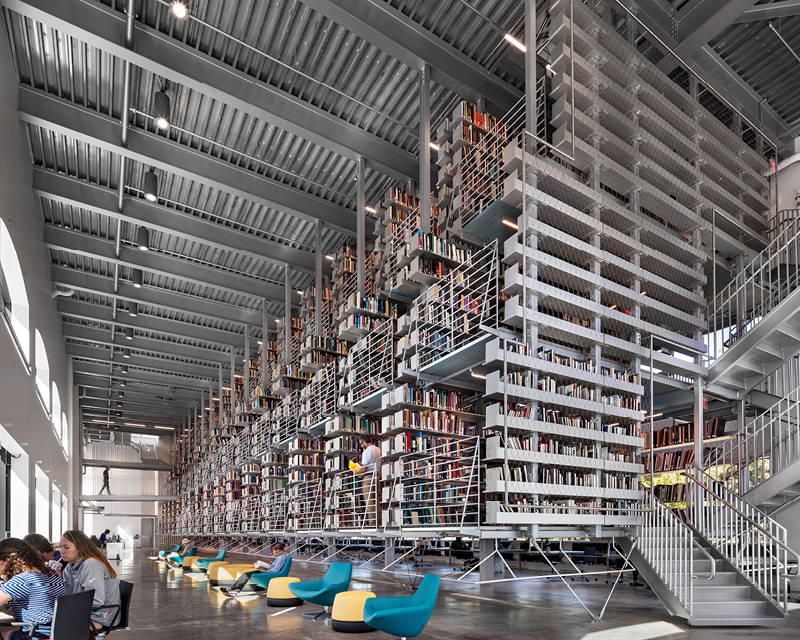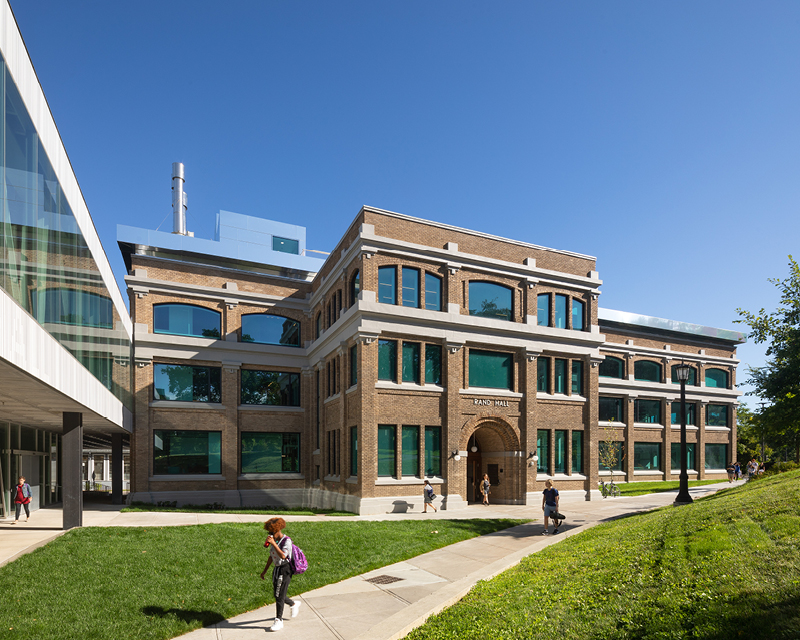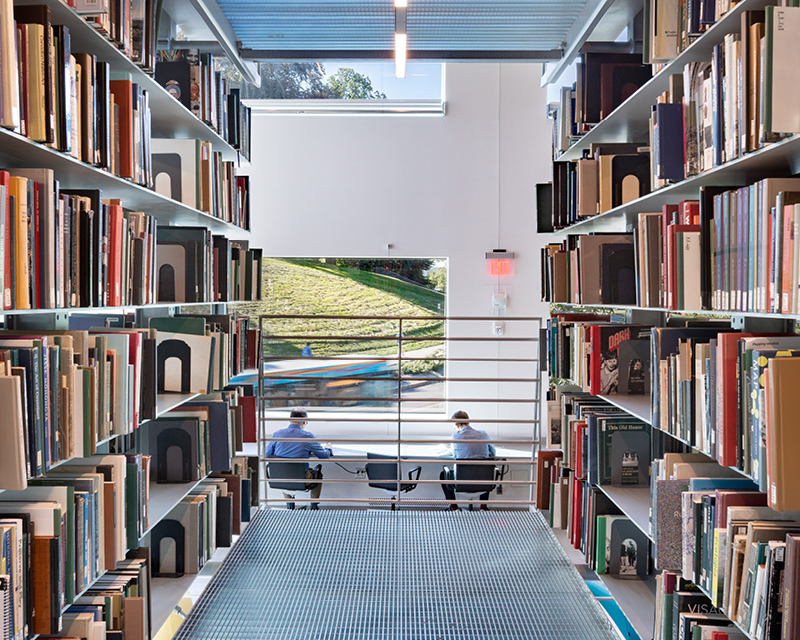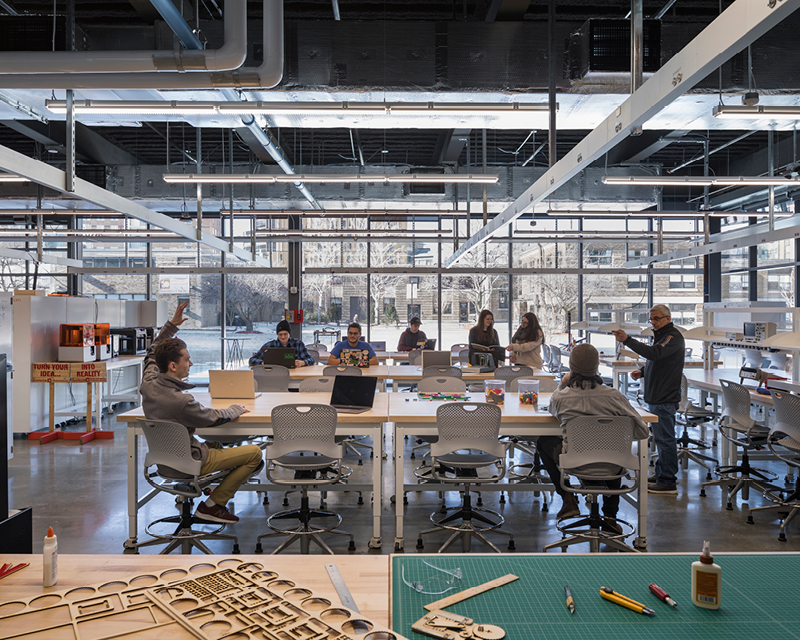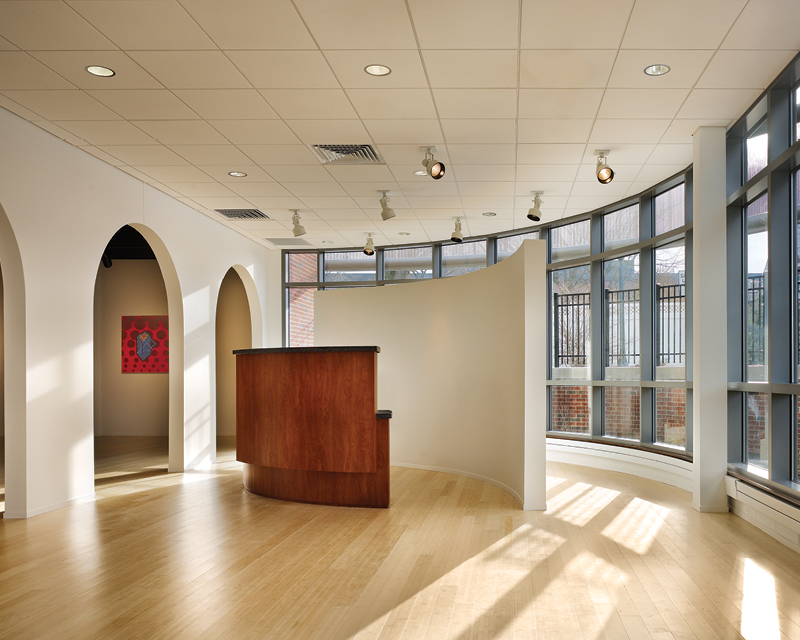With a conceptual plan developed by renowned architect Wolfgang Tschapeller, Cornell University’s new Mui Ho Fine Arts Library is a 21st-century, LEED Gold-certified marvel. STV served as architect-of-record for the adaptive reuse of the former Rand Hall, transforming the traditional brick industrial building into an exciting, inviting new academic research library for the College of Architecture, Art and Planning, containing more than 100,000 volumes of the country’s best fine arts materials.
Three vertically stacked bookshelf mezzanines appear to float within the 40-foot-tall, clear-span interior – a striking structural achievement made possible through STV’s meticulous analysis and engineering design. With semi-transparent steel-grated floors and an open layout free of walls within the stacks, the design creates uninterrupted sight lines from one end of the atrium to the other. This configuration not only showcases the building’s structural elements but also highlights the collection itself, inviting exploration through the suspended stacks. To realize this transformation, a floor was removed, steel and brick walls were reinforced and an entirely new roof structure – engineered to support the hanging book stacks – was installed, all while meeting contemporary needs for seismic performance, life safety and accessibility.
To support Cornell’s ambitious energy efficiency goals, STV implemented a combination of high-performance building systems and robust thermal envelope improvements. The team evaluated a variety of mechanical, electrical and plumbing strategies to both minimize energy use and optimize environmental conditions for the preservation of books. Computational fluid dynamics (CFD) modeling informed airflow and temperature control, while a mix of radiant heating and cooling, displacement ventilation and passive dehumidification helps regulate temperature, air quality and humidity. The design also integrates Cornell’s existing high-efficiency, low-carbon lake source cooling loop and cogen heating plant.
Beyond the suspended stacks, the library features a range of spaces that contribute to its programmatic success, including generous reading areas, spaces for individual and group study, workshops and makerspaces and a rooftop deck for testing and presenting student projects. Following its completion, the project took home awards from the American Council of Engineering Companies of New York and Engineering News-Record.
30,000-sf
renovation
$13.2M
construction cost
40-ft-tall
atrium
